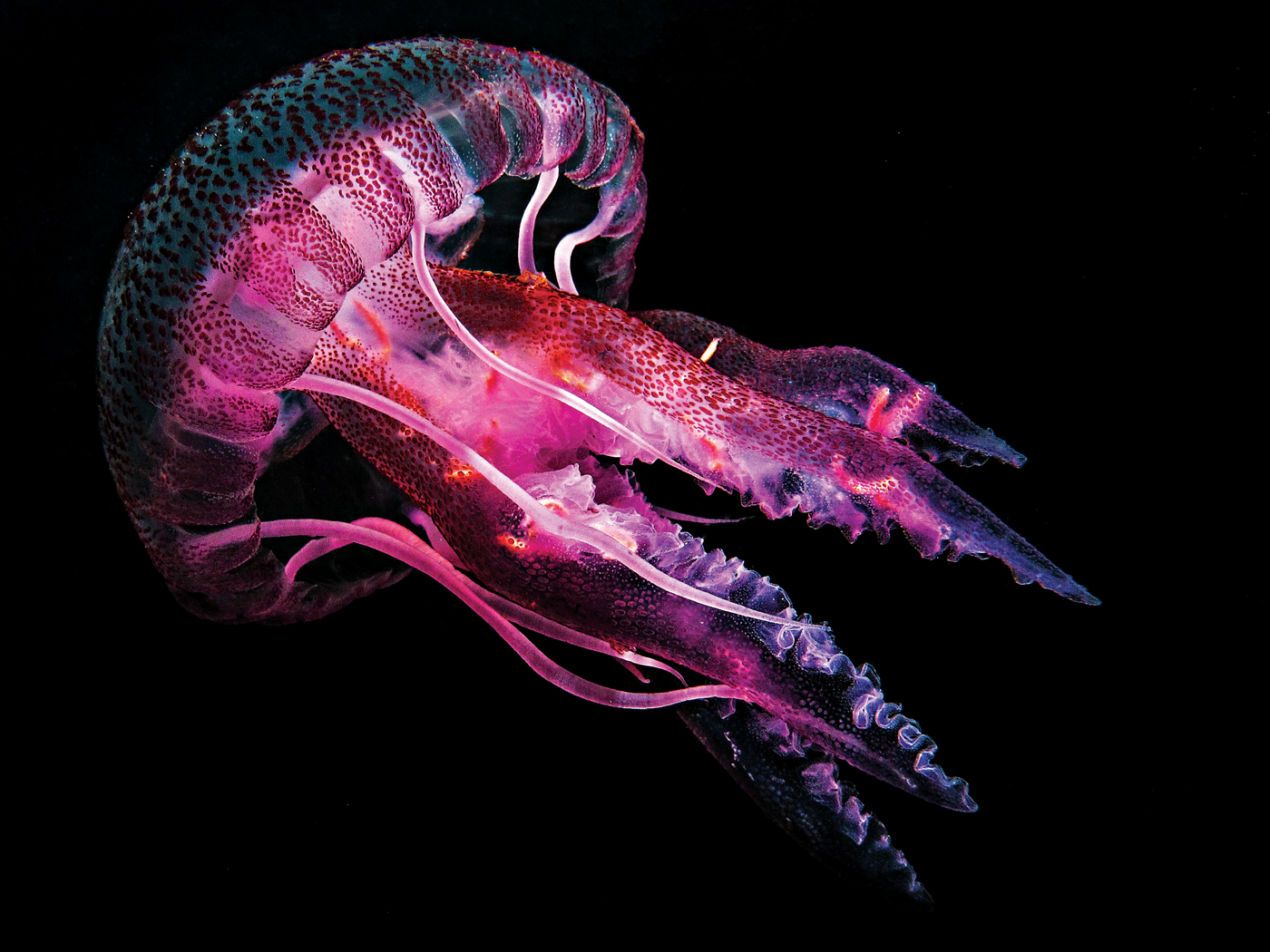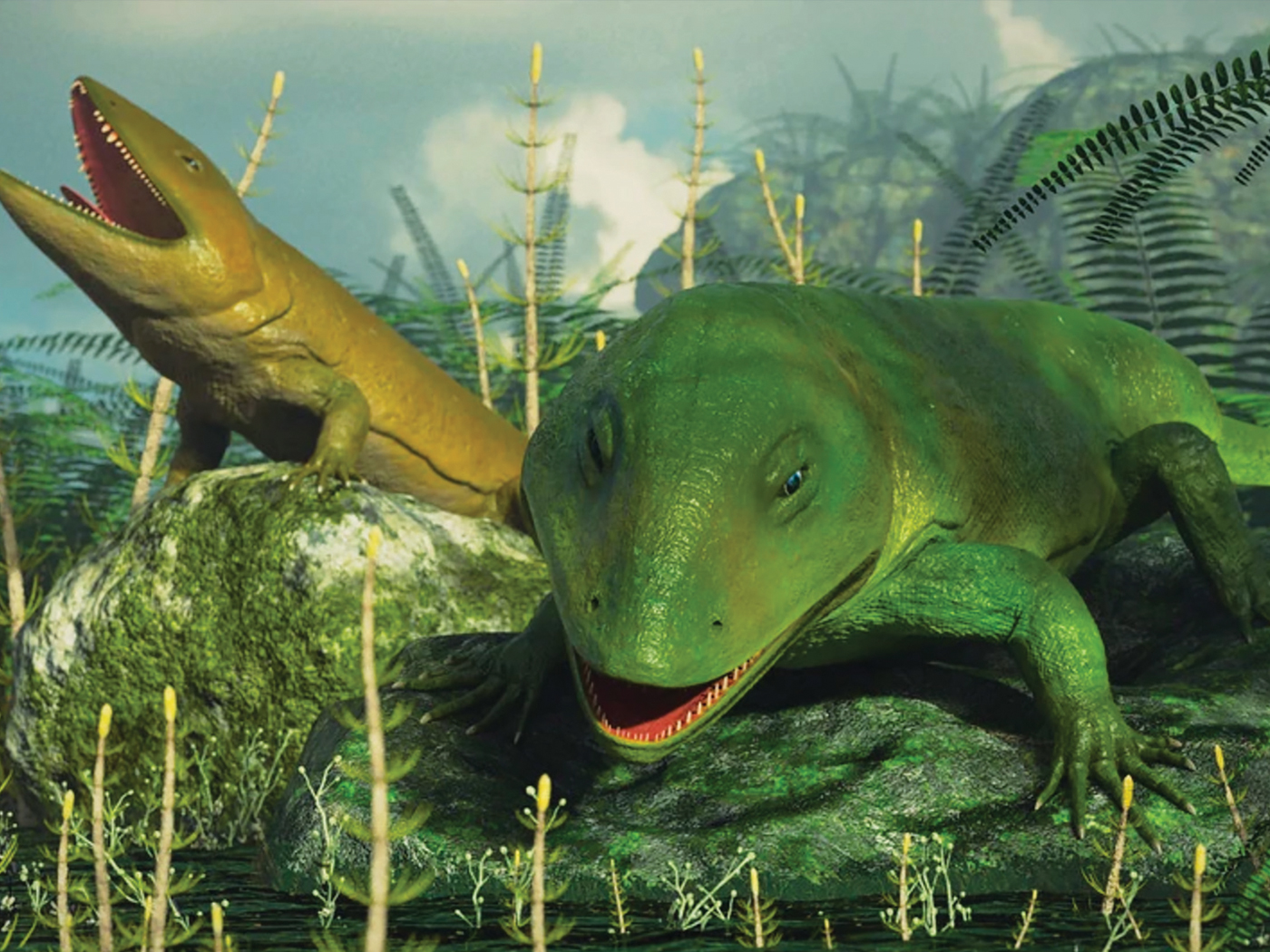Most people, when they see something new, quickly try to categorize it. They want to associate it with something familiar. They say, “That’s an odd piece of jewelry,” or “That’s a rock.” But getting careless with this generally helpful tendency can lead to error, like when the “jewelry” turns out to be a memory stick on a lanyard or the “rock” turns out to be a piece of man-made building material. So, what about people who categorize certain fossils as “feathered dinosaurs”? New descriptions of the Chinese fossil Anchiornis give reasons to rethink this popular categorization.
Scientists aimed violet lasers at eight representative Anchiornis fossils, causing remnants of the original tissues—not minerals—to glow in a dark room. This shed new light on the creature’s former soft parts, including its feathers and flesh.1
Anchiornis was the size of a chicken. Michael Pittman, a coauthor of the laser study, reported that the animal had “drumstick-shaped legs, a slender tail and an arm that looks just like a modern bird wing.”2 Skin behind its forewings showed small, regularly spaced divots that the researchers identified as covert feather follicles. A few specimens revealed “pebble-shaped”1 skin scales on toe pads that Pittman said “are just like chickens today.”2 Scales covered its lower legs and ankles “like modern birds.”1
The animal even had a flight-crucial propatagium—the elastic skin flap that runs along the wing’s leading edge to shape wings for flight. The study authors wrote, “The propatagia also suggest that Anchiornis could produce a relatively straight arm, a posture broadly found in many living gliding birds (for example, comorants [sic], albatrosses and pelicans).”1
But not all its features match modern birds. The most obvious differences are wings on its hind legs, and long tail. Do these features require researchers to fit it into a dinosaur category? Not necessarily.
With so many bird qualities, especially its feathers, shouldn’t these researchers categorize Anchiornis as a bird and not a dinosaur?3 Perhaps some factor other than anatomy plays a role in calling these extinct creatures “dinosaurs.” One factor that comes to mind is the story that dinosaurs evolved into birds. Without actual fossils to illustrate that story, though, it sounds more like fantasy than fact.
In other words, we have clearly defined, anatomy-based categories for “bird” and “dinosaur,” but evolution needs a third, bird-dinosaur transition category. Even if feathered dinosaurs existed—and at this point evolutionists themselves disagree over all the feathered dinosaur candidates—they would not necessarily represent these transitions. In fact, anatomy demands that dinosaurs did not evolve into birds. The required step-by-step transitional skeletal and other body changes would deliver an immobile monster.4 Anchiornis may be a challenge to categorize, but it certainly fits no evolutionary category.
Why couldn’t God have made Anchiornis as a four-winged bird with a long tail? Its long tibia and drumstick-like legs show that Anchiornis could walk like today’s chickens. Bird paleontologist Alan Feduccia suggests that it used its wing-claws to climb trees.5 Its fore and aft wings suggest that it could possibly glide through the air, too.6 At least one modern bird climbs trees and glides to the ground today—the kakapo. This endangered New Zealand “flightless” parrot uses its wings for controlled descents.
Including Anchiornis among birds would widen the “bird” umbrella to include its odd but uniquely created features, perhaps in ways that scientists widened the “mammal” category—after almost a century of debate—to include the odd but unique platypus features. If Anchiornis best fits a bird category, then it was not a feathered dinosaur and thus cannot illustrate evolution. So far, Anchiornis as a four-winged tree-climber perches nearest the creation-friendly category of “bird.”
References
- Wang, X. et al. 2017. Basal paravian functional anatomy illuminated by high-detail body outline. Nature Communications. 8: 14576.
- Lasers flesh out dino-bird profile. Phys.org. Posted on phys.org February 28, 2017, accessed February 28, 2017.
- A few evolutionists remain open to Anchiornis being a bird. For example, see Czerkas, S. A. and A. Feduccia. 2014. Jurassic archosaur is a non-dinosaurian bird. Journal of Ornithology. 155 (4): 841-851.
- Morris, J., and F. Sherwin. 2009. The Fossil Record. Dallas: Institute for Creation Research, 77.
- Feduccia, A. 2012. Riddle of the Feathered Dragons: Hidden Birds of China. New Haven, CT: Yale University Press, 160-163.
- This remains uncertain since its feathers were quite symmetrical, unlike asymmetrical flight feathers.
* Mr. Thomas is Science Writer at the Institute for Creation Research and earned his M.S. in biotechnology from Stephen F. Austin State University.







